‘OO’ GAUGE LAYOUT MARAZION AND MOUNTS BAY
Having worked on the real railway, Paul Taylor was determined to make his fantasy ‘forever layout’ as authentic as possible.
Words: Chris Gadsby Photography: Chris Nevard Artwork: Andrew Mackintosh
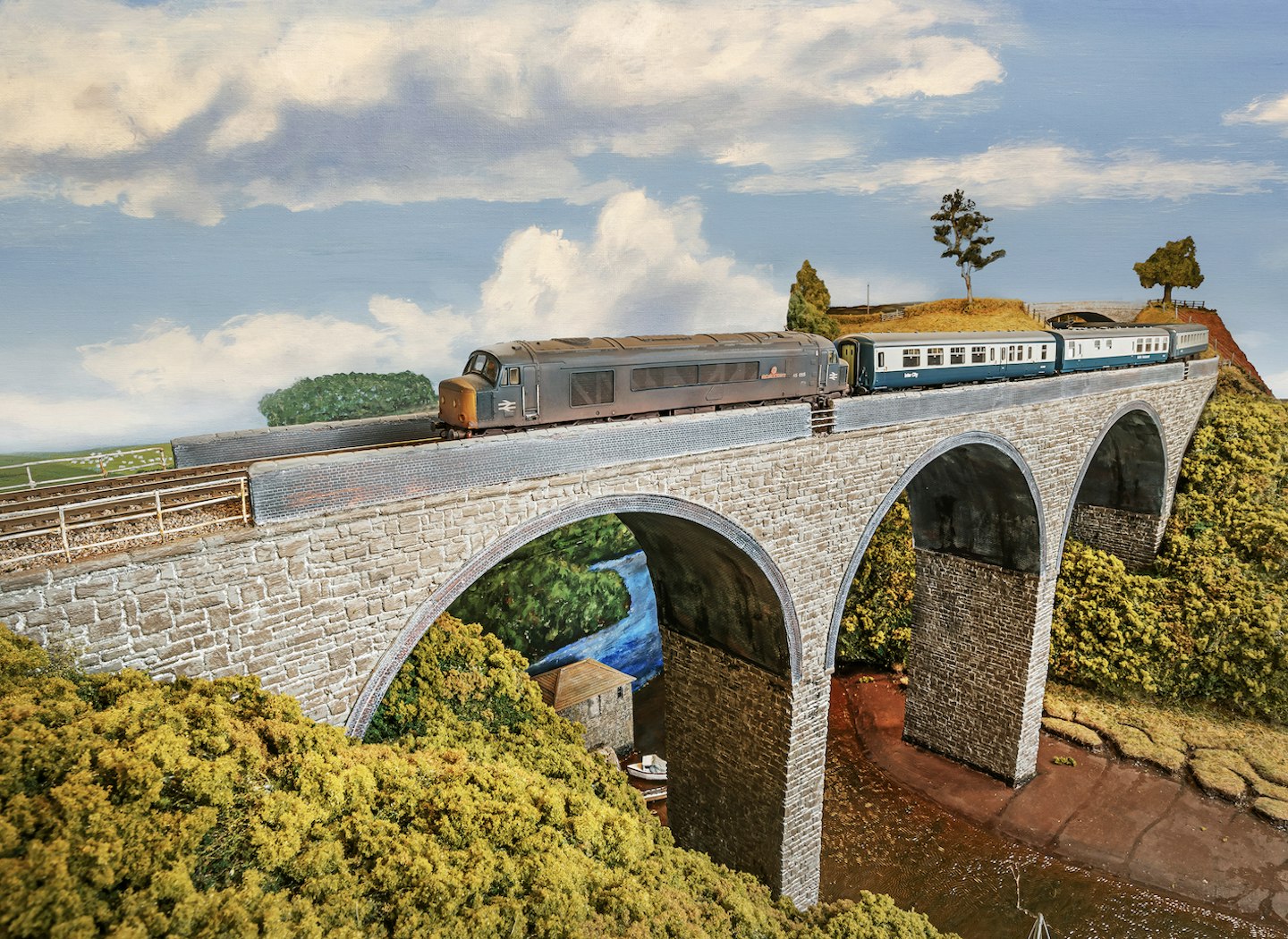
What makes this layout great?
‘Forever’ layouts tend to receive plenty of care and attention, and this is no exception. Paul has spent 13 years carefully crafting each aspect of this build and you can see the results. Nothing looks out of place and everything has apurpose.
Building a model railway is a labour of love. Each part has been carefully planned, carefully designed and carefully placed over a period of many years. Paul Taylor started building the baseboards in 2010 for what was intended to be his ‘forever’ layout, but a house move means ‘Marazion and Mounts Bay’ is now awaiting reassembly.
“When I started to build the layout I didn’t think we would ever be moving house, so I gave the baseboards the real belt and braces treatment of glueing and screwing them all together, meaning it was a right pain in the posterior to take apart and get down through the loft hatch for storage. Hopefully, I can get it put back together before too long.”
Let’s not dwell on a layout that’s currently in pieces though, and rewind the clock to 2023. Paul’s layout fits snugly into the loft, measuring 12ft 9in by 10ft 6in at its widest point, and consists of a main line, small through station, two branch lines, a viaduct, gradients all over the place and a fiddleyard. Quite the spectacle. Set in the mid-1970s to early 1980s, ‘Marazion and Mounts Bay’ is Paul’s ‘what if’ scenario of Cornwall.
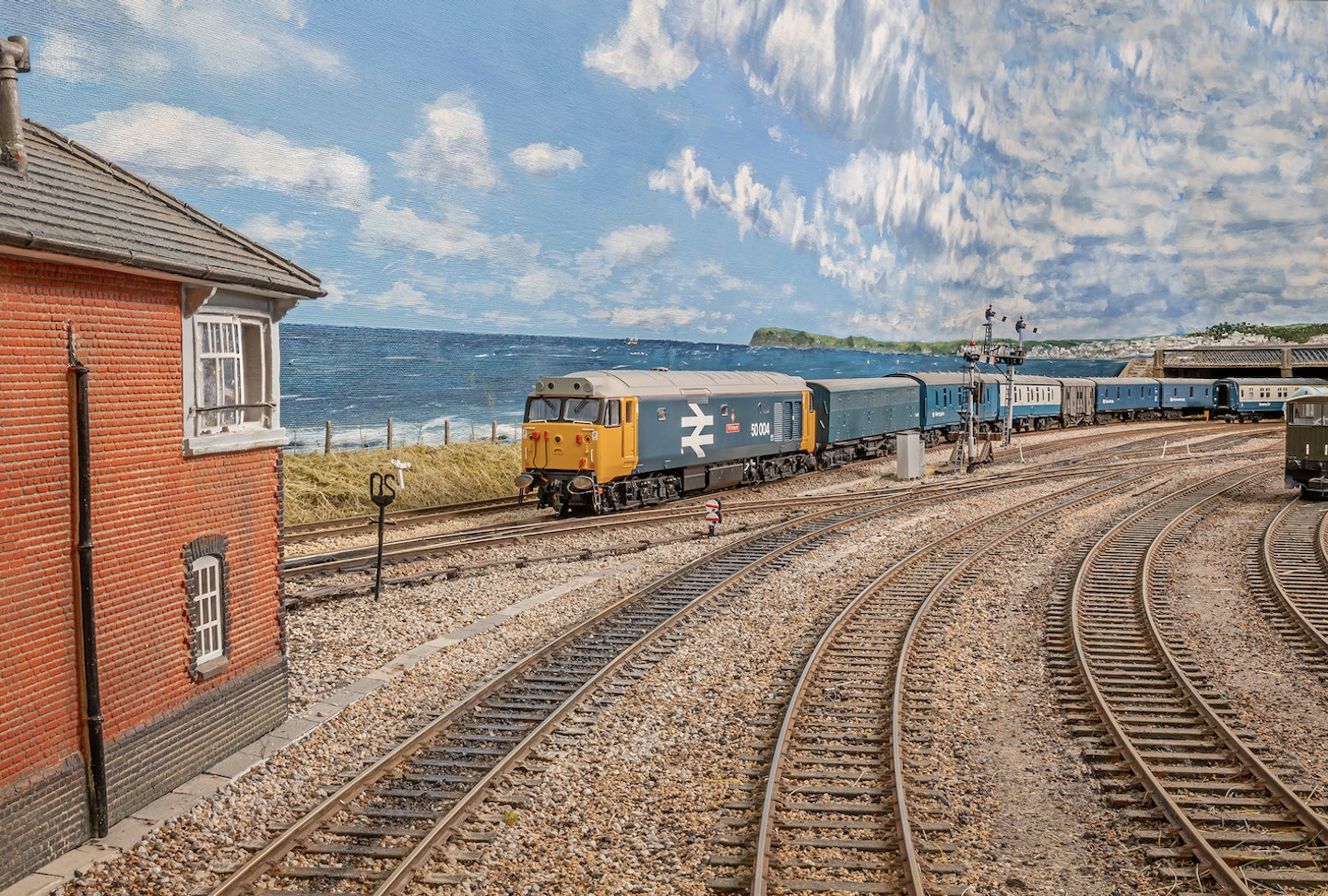
The locomotives and rolling stock are a mixture of second-hand and new, but only when the layout was finished did Paul set about standardising couplings, improving the wheels, replacing missing parts, renumbering and weathering.
“I was brought up in Plymouth and when I began to work for British Railways I was based out of Laira, so the Western Region has always been my favourite and the one I go to for inspiration. My take on reality is that the line did not pass through Redruth and Camborne; instead, it went much closer to Falmouth as the principal town in the area, heading west along the coast and going to Penzance that way. Since the line approaches Penzance from a more southerly location, the branch to St Ives comes off from Mounts Bay.
I didn’t quite have the space to model it all, as Penzance should be where my fiddleyard is! The Devon main line was perhaps characterised by long expresses, but the Cornish main line was quieter and had a better mix, including more local freight, albeit principally clay trips”
3 things we like
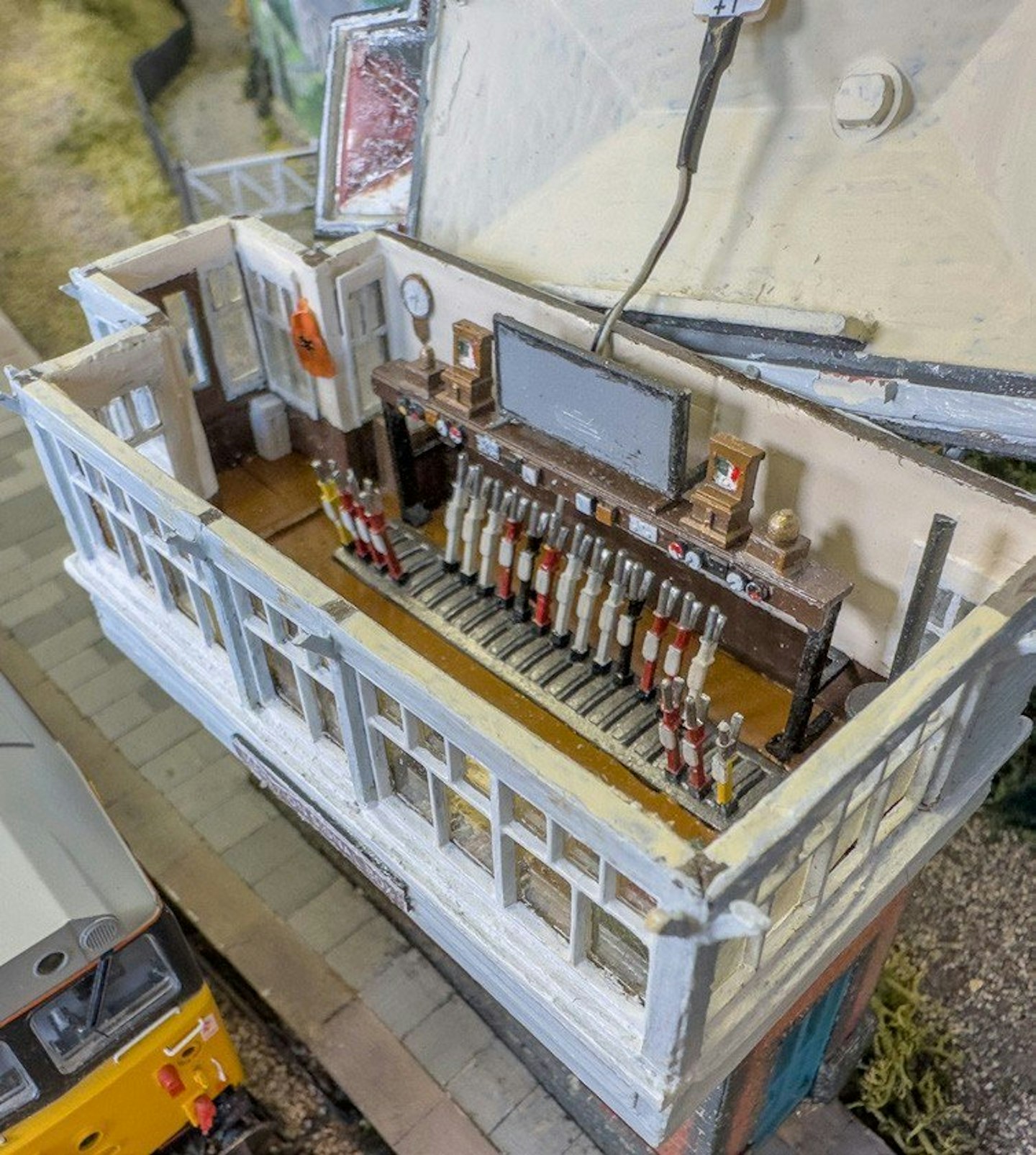
1 The interior of Marazion signal box.

2 Paul’s attention to detail extends to the road signs.
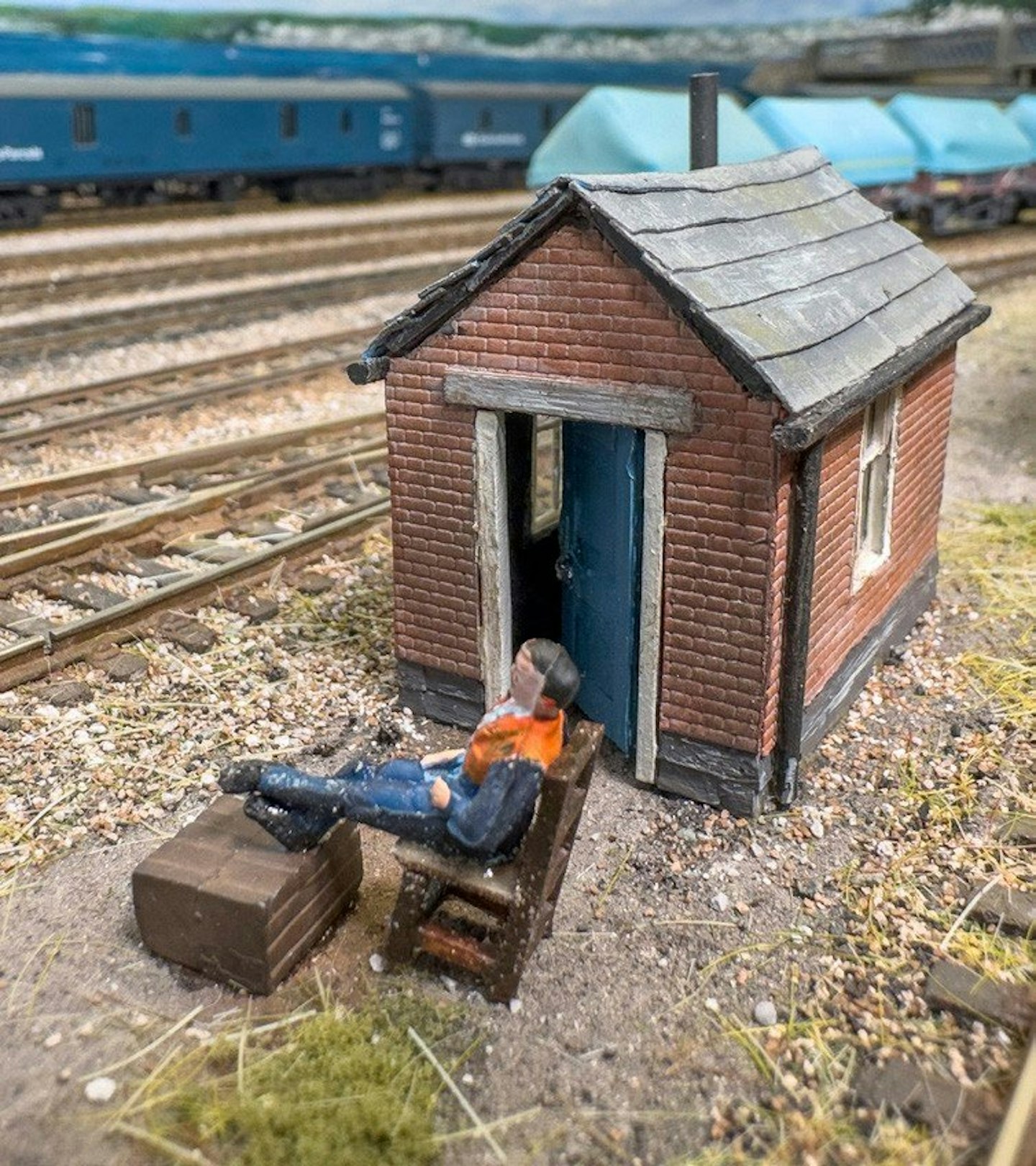
3 This worker putting his feet up.
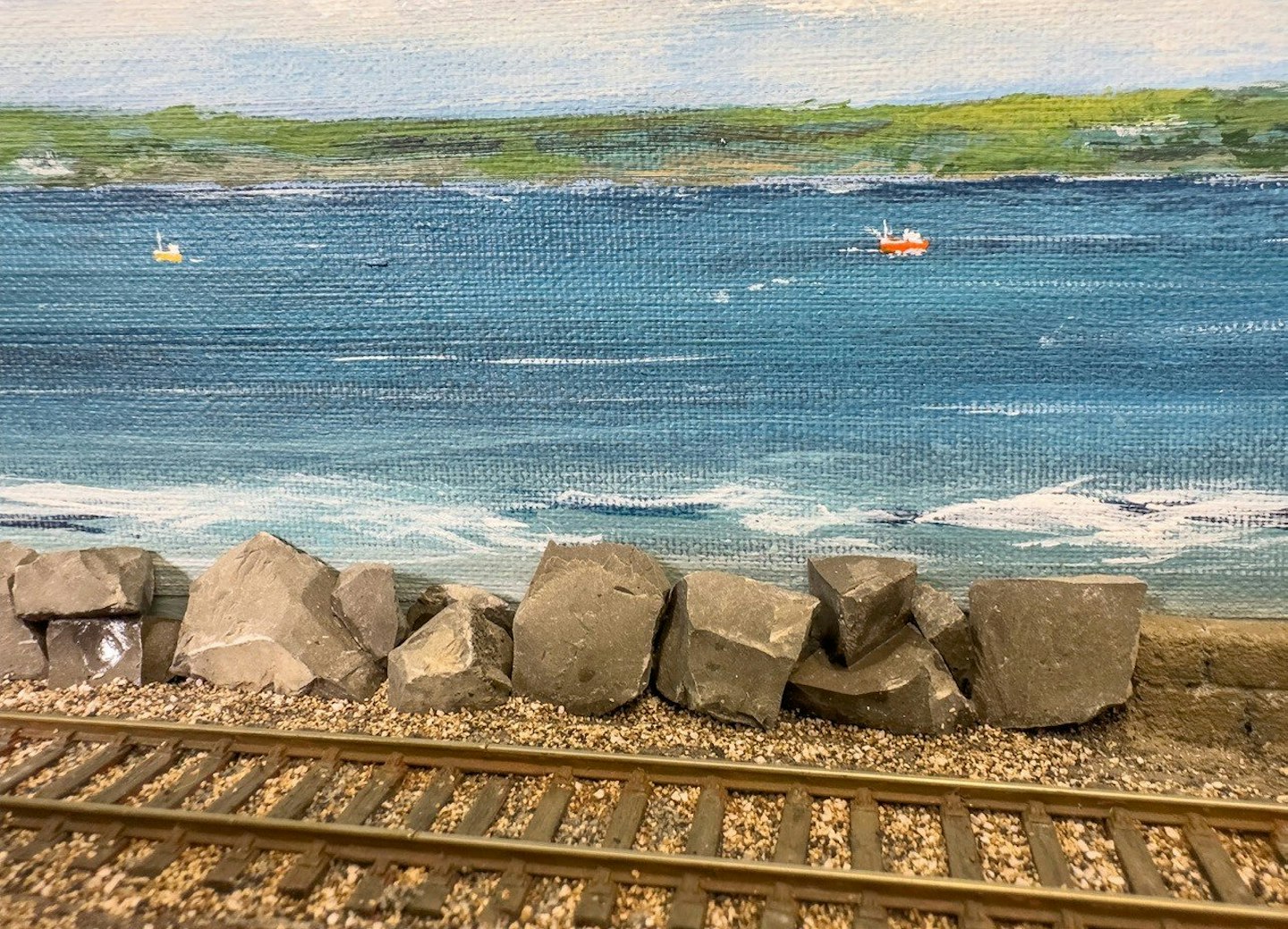

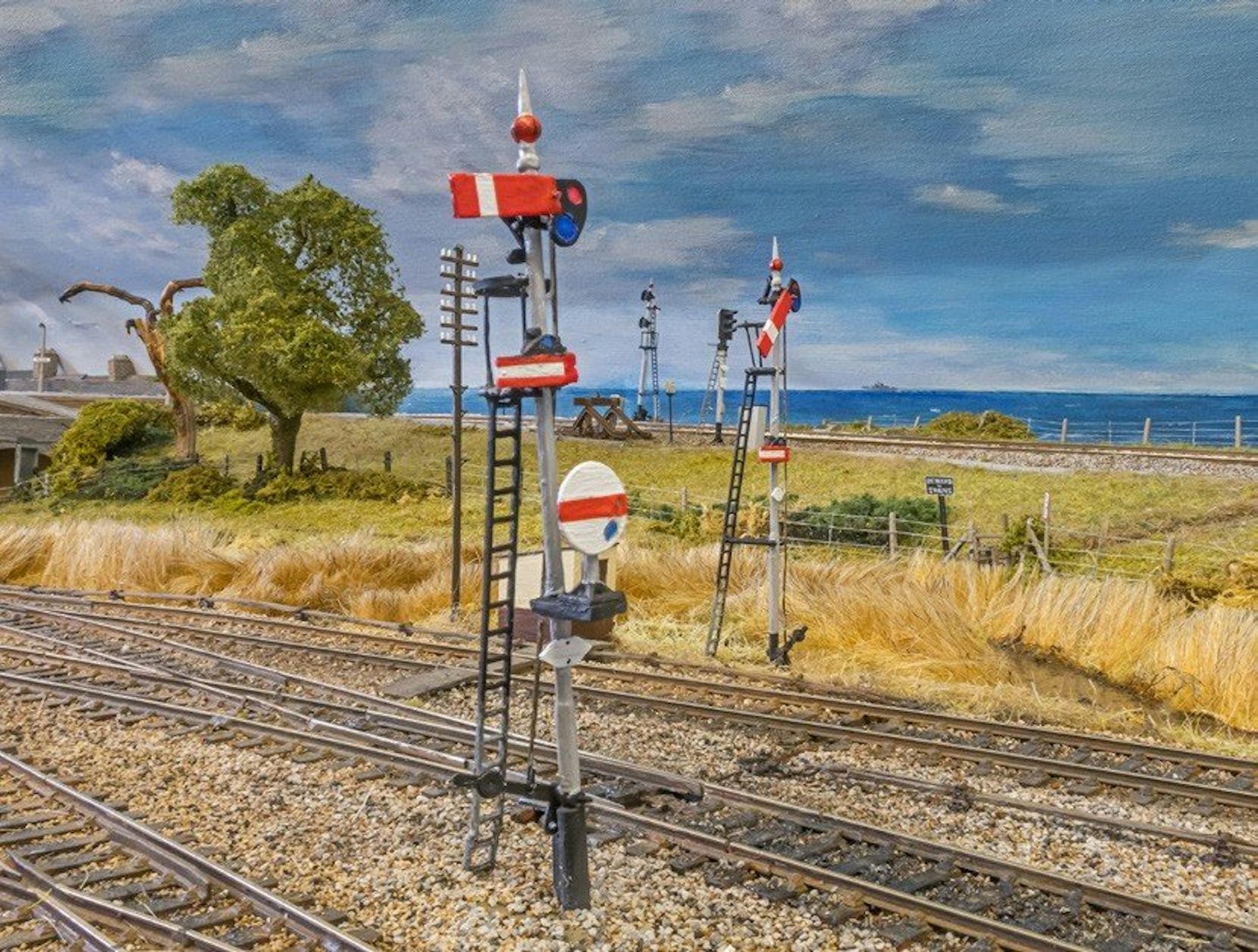
Paul thought he would enjoy making trees and initially aimed at making particular types. However, his first attempts, with spray glue and cheap hairspray, just ended up in a smelly mess. His third attempt, using watered‐down Mod Podge as an adhesive, proved the most satisfactory.
With his plan in place, Paul began to create the baseboards, taking it right up to the eaves of the house. This has meant a sloping backscene in places, but more scenery. With the height dictated by roof joists at 4ft, Paul wanted to use the space as much as possible. Then it was time for track. Having worked for BR for so long, Paul wanted everything to look perfect, and was a stickler for detail.
“The track is a mixture of Peco streamlined wooden and concrete sleepers where appropriate. For both, I altered the sleeper spacing to make it more suitable for ‘OO’ gauge. This meant cutting each piece of track at a scale 60ft length (240mm). On the wooden sections, the sleepers are slightly more spaced out than they are on the concrete sleeper sections, again accurate to real life, and every turn over 5mph is canted. Doing the track was my favourite part of the build because that is the most railway type of thing. Getting the layout planned correctly, ensuring there is enough space for DMUs, for example, and getting the smoothest transitions you can get from straights to curves was very enjoyable. The points on the main line and those feeding into it are operated via a small feeder panel, but those in the fiddleyard are controlled via the ‘hand of God’. I couldn’t face wiring those up. The electrics were the most difficult part of the build and I found doing it in the winter when the solder didn’t take as well made it extra difficult.”

With a significant part of his working life spent in the Safety and Standards departments, and later in re-signalling projects on the railways, Paul enjoyed designing signalling for the likely traffic pattern across the layout and adapting Ratio signals for particular circumstances, though they were extremely fiddly and delicate.
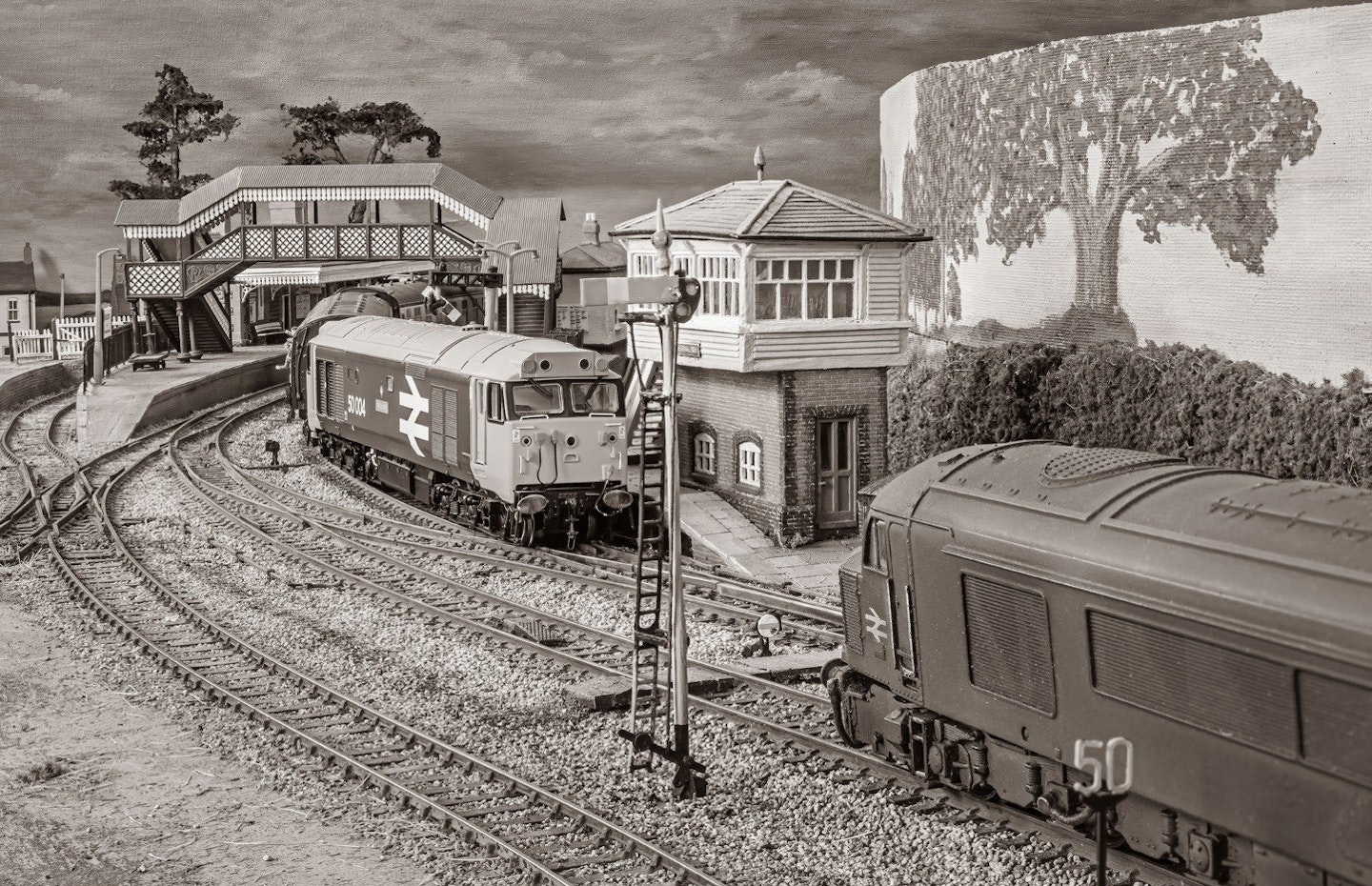
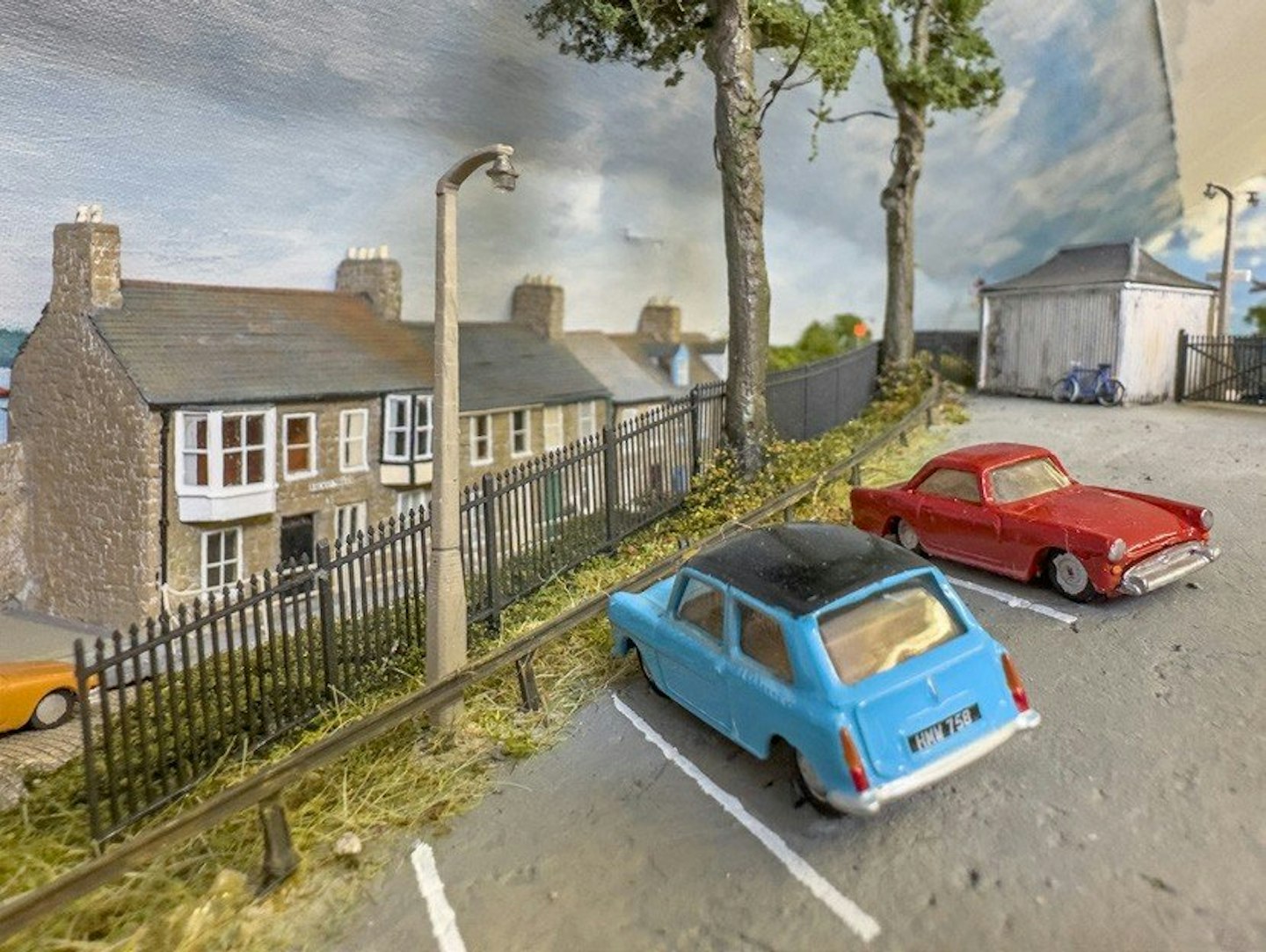
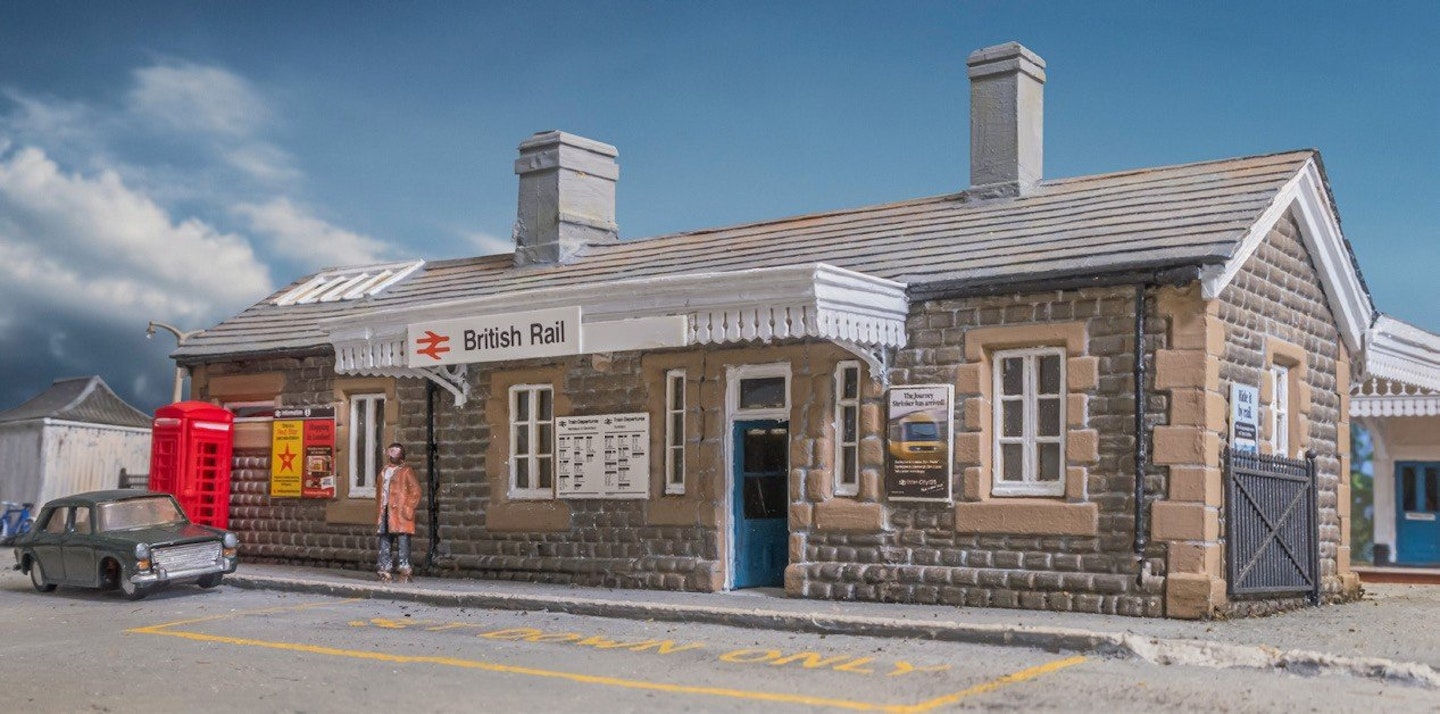
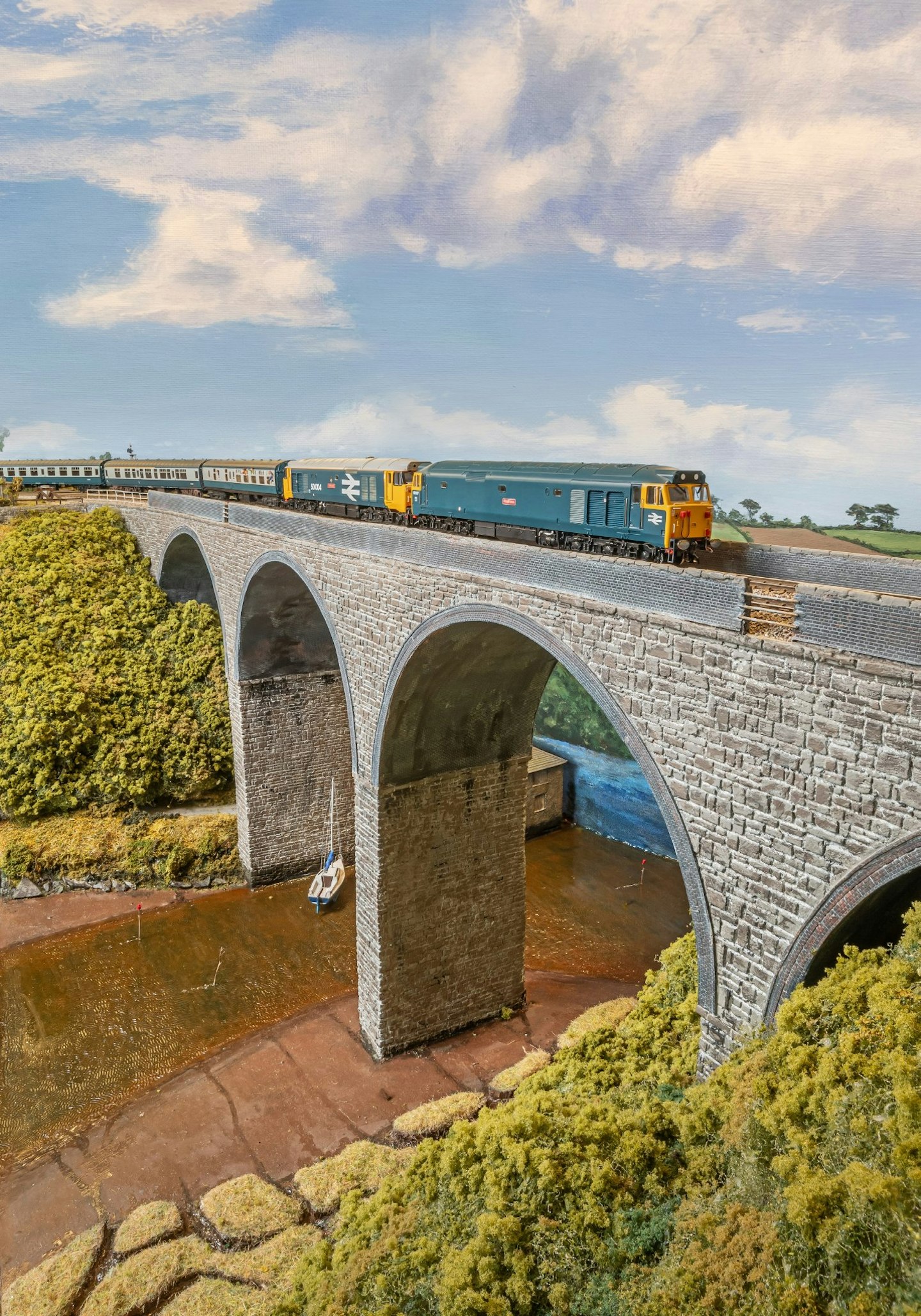
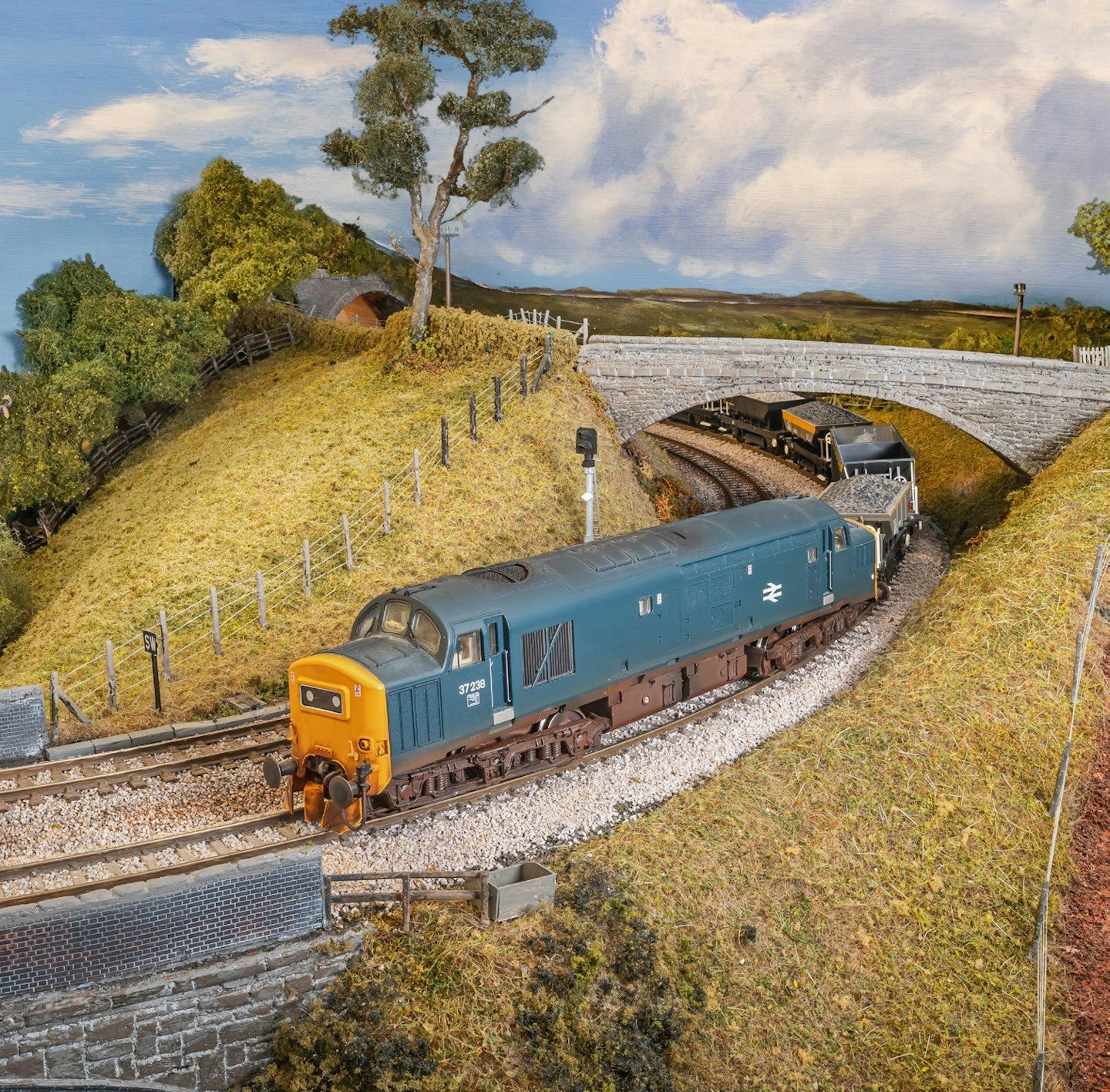
LAY OF THE LAND
Our world isn’t just railway lines. Once the track had been done and ballasted, he began work on the surrounding areas.
“Although a certain amount of inside information from working for the railways was useful, much reference was made to the railways and surrounding scenery illustrated in the photographic albums of John Vaughan, Roger Siviter and Brian Morrison. To get various elements as close to reality as I could, almost everything required selective compression. The scenery is very basic, made from chicken wire, papier ‐mâché and some extruded foam. I also used hanging basket liner. Like others, I decided to put myself through the torture of doing lineside posts and wire fencing. I made the concrete posts out of old bits of plastic card and for the wire I used Lycra thread that I sourced from a firm in London. I got 3km on a small spool and it was easy to apply, even if it was mindnumbingly tedious. The buildings are mostly kit-bashed. Marazion’s signal box was a particularly fun one to create because the interior of the box overhangs the layout. There is a row of terraced houses and a pub that is scratchbuilt from wood, the stonework scribed into a filler coating. I’ve tried to replicate the typical houses you get in that area and the pub is inspired by two in Plymouth.”
The most striking feature of ‘Marazion and Mounts Bay’ is Paul’s viaduct, which spans a large section of the front of the layout. It is not only a significant feature but a stunning piece of design.
“The viaduct is of plywood construction with hardboard infilling the arches and covered in lightweight filler, again scribed. Another long-winded task. The inside of the arches are brick and the viaduct is based on a number in Cornwall, all of them slightly different. The river is varnish, made up of lots of layers, and has an abandoned waterside warehouse with a couple of boats I made from balsawood. Getting the colour right was challenging because it seemed to depend on the angle from which I looked at the river! On each side of the river, I have a myriad of trees and bushes made from wire and a lot of scattered material that brings that unkempt section to life. At the rear, a hand-painted backscene shows the water a slightly different colour to the scenic section, as on the backscene you are looking along the water rather than down through it.”
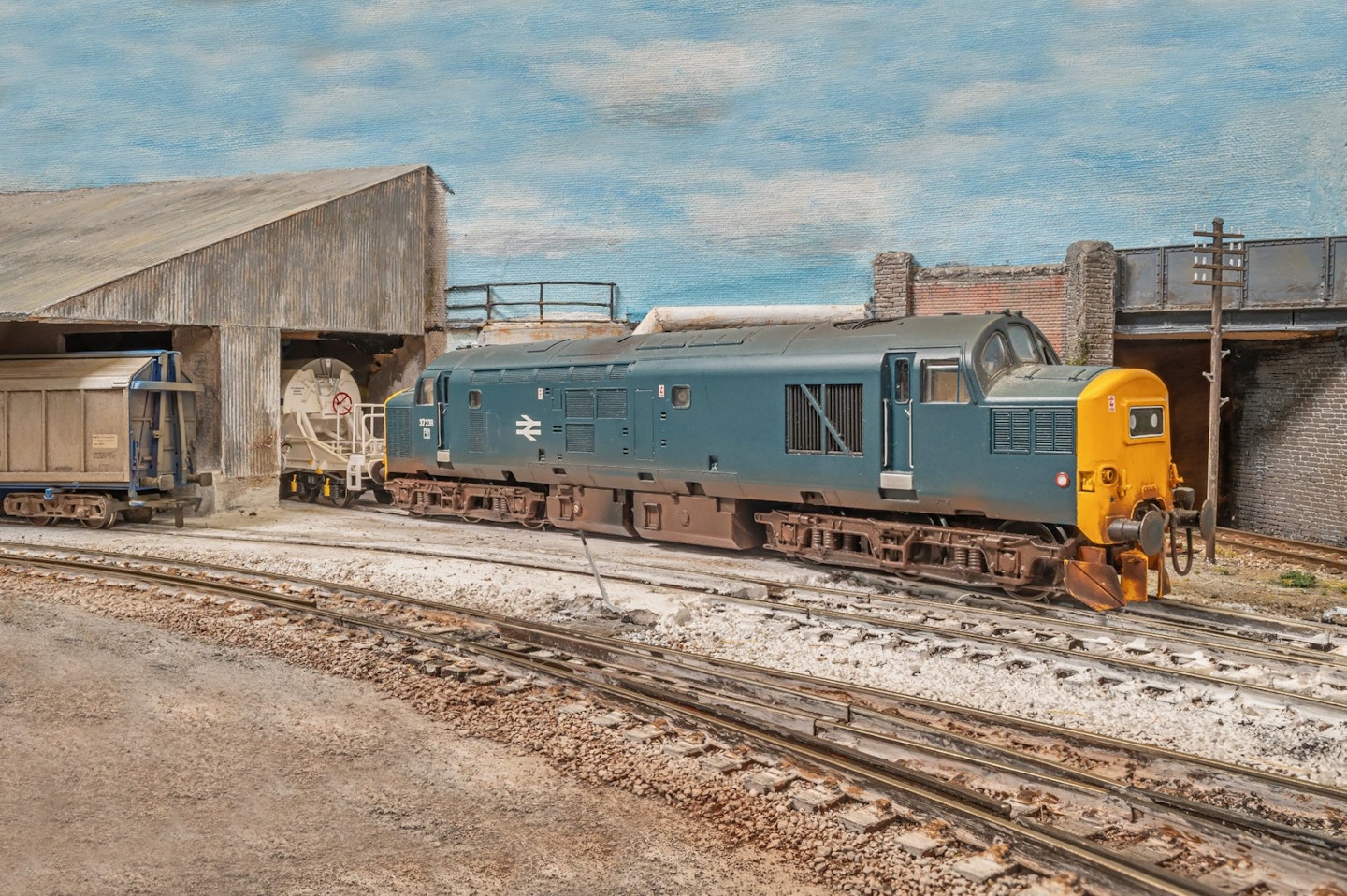
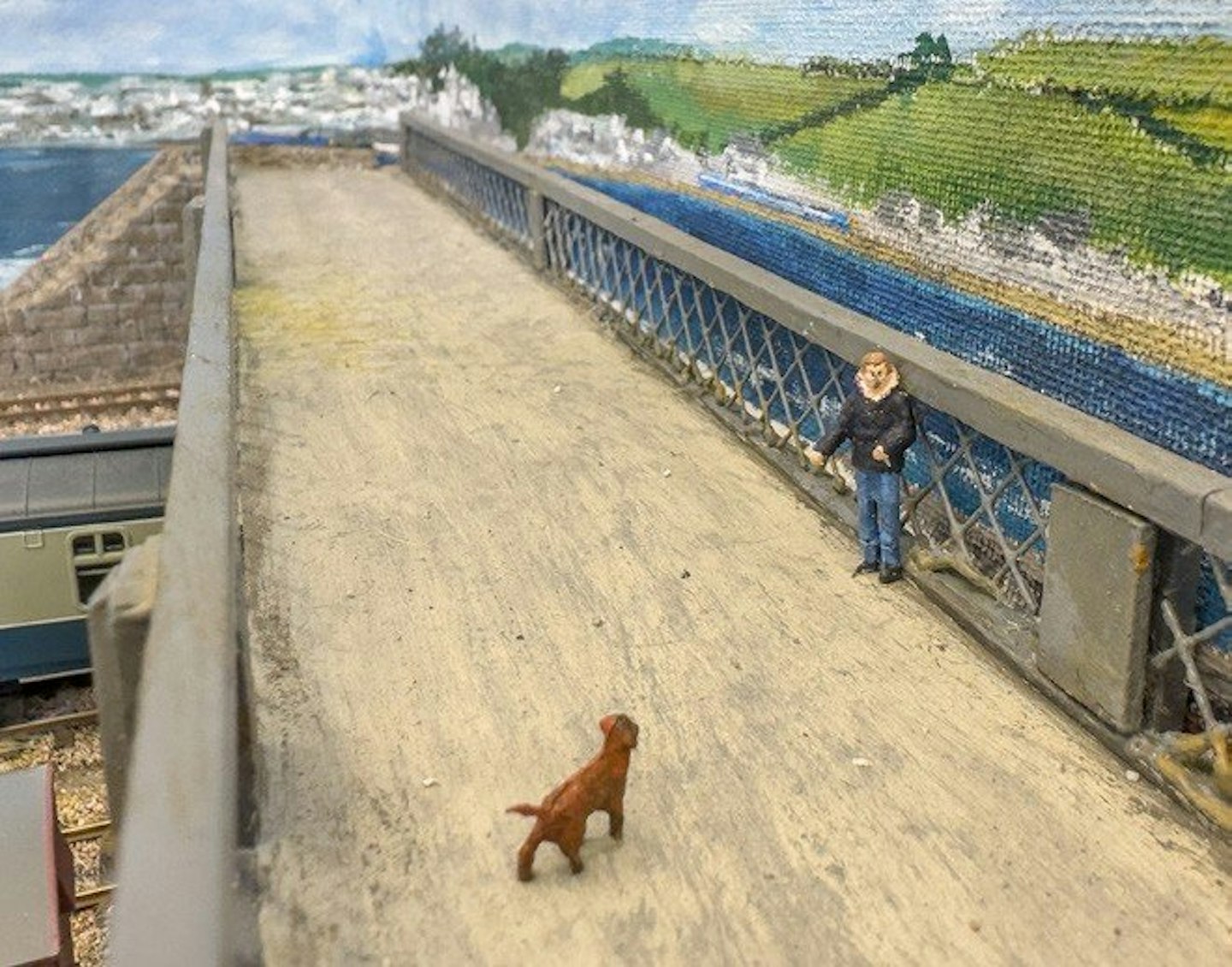
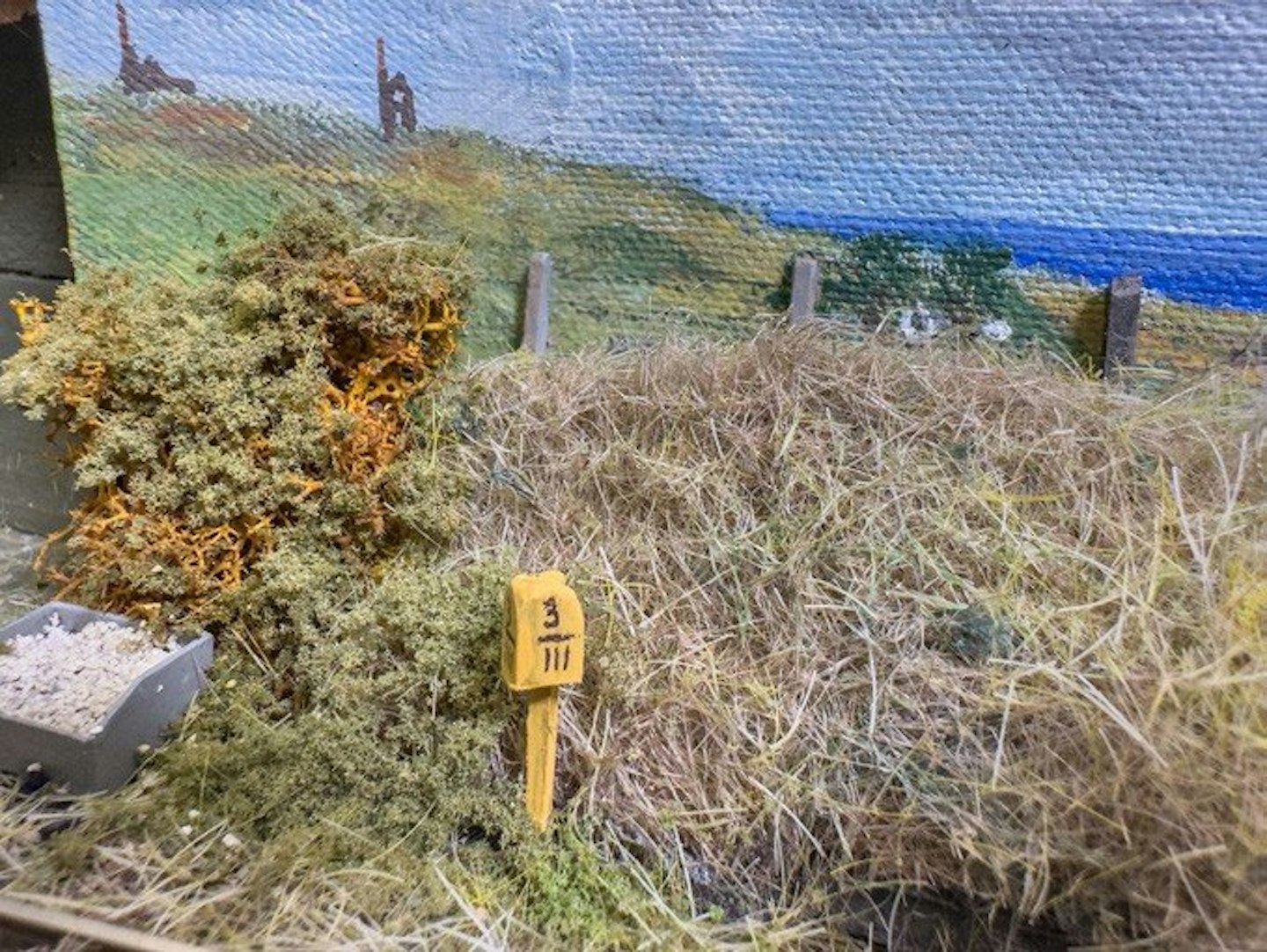
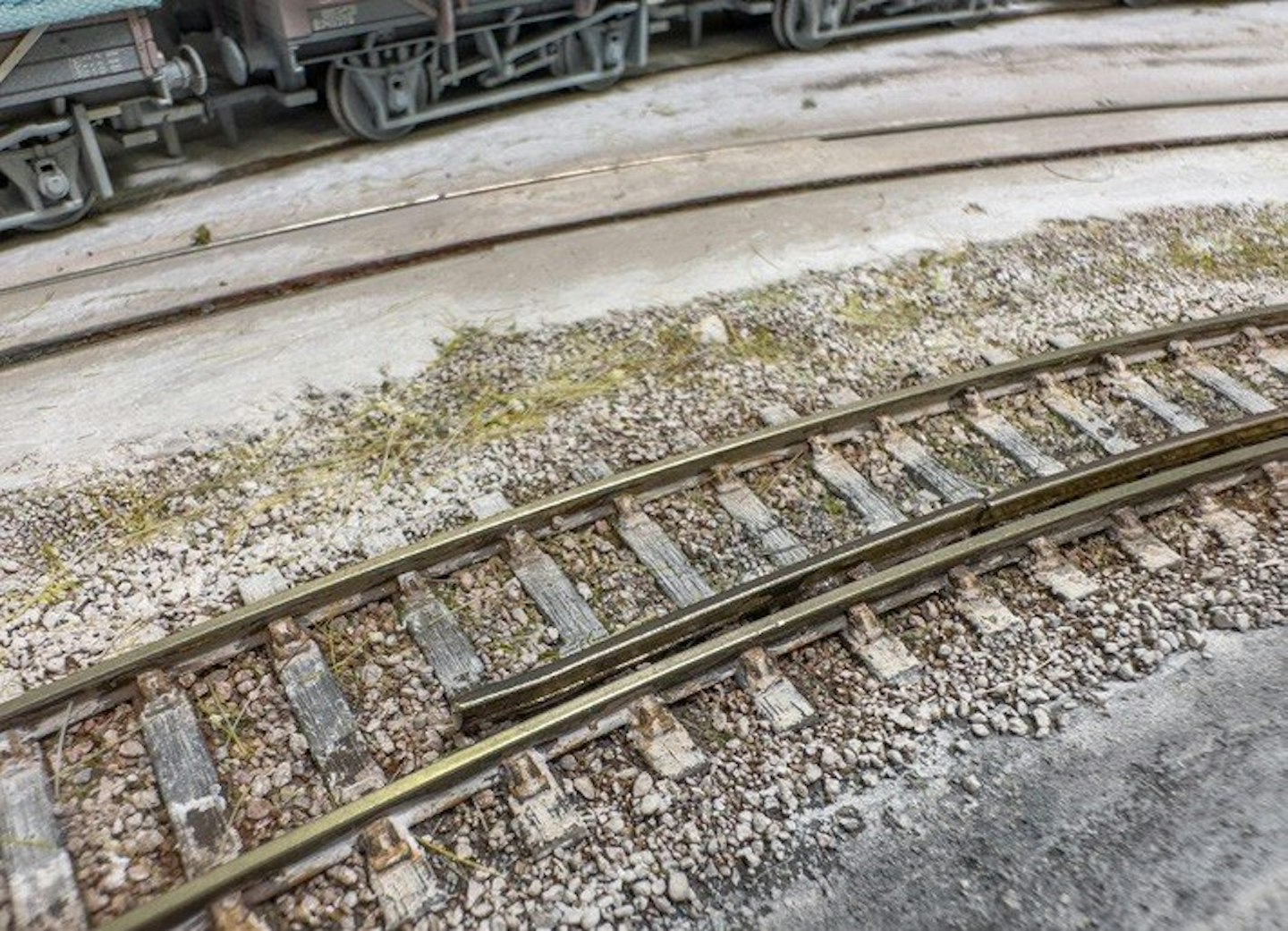
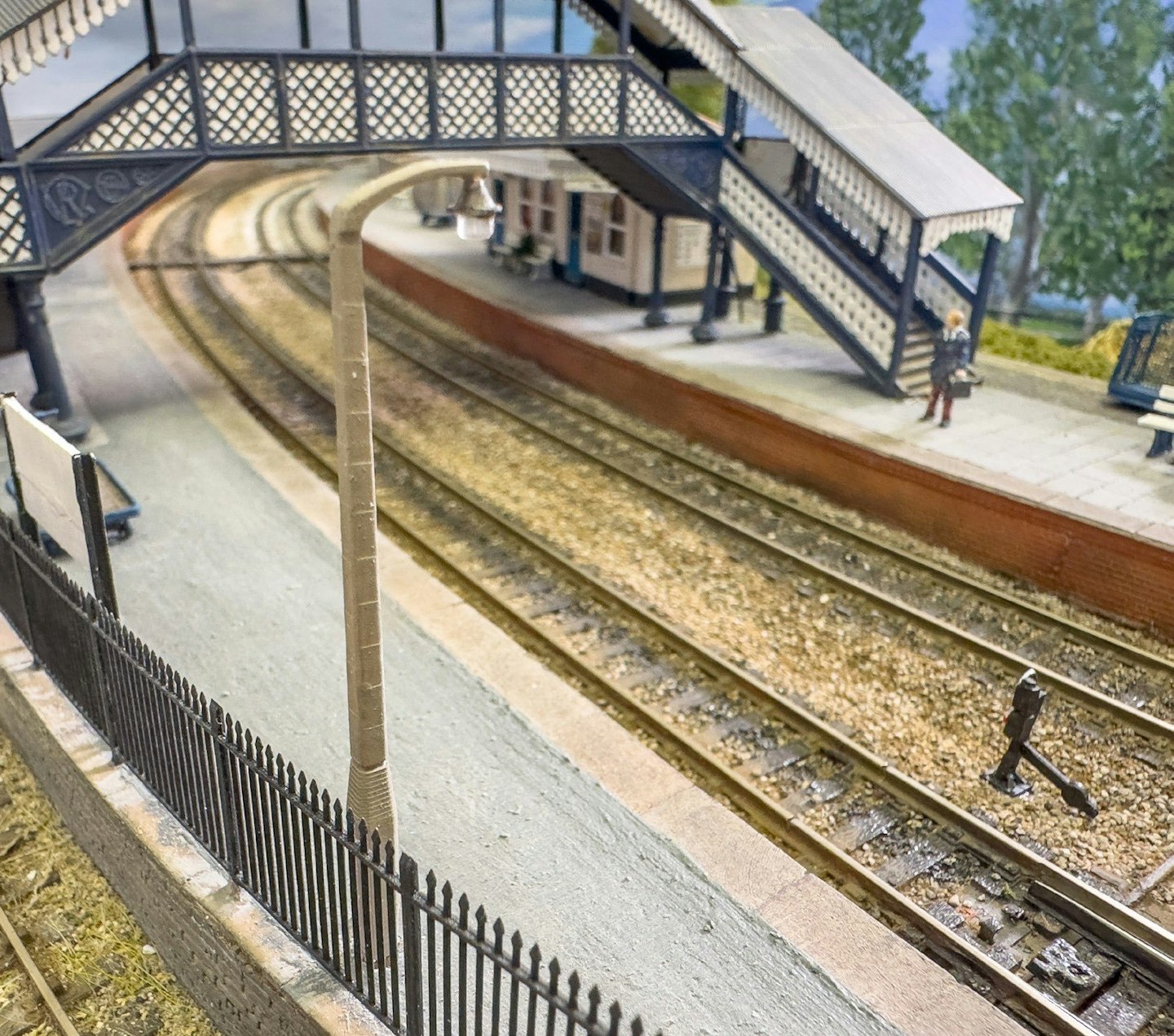
FUNNY FEATURES
Not one to take things too seriously, Paul has added some amusing features to the layout.
“I had an old Hornby HST power car lying around that I decided to use. Anyone who travelled on the network in this period will know how often the HSTs broke down owing to overheating, and then had to be rescued; you would often see them being hauled by something else! I cut open the front to make a panel and fixed the drawbar in place, so it could be hauled by a diesel locomotive. I also thought I needed some passengers flailing out of a coach, so I took an old model, cut out the windows and glued some figures leaning out of them. They are all structure ‐gauged to ensure they don’t hit anything.”
We hope that Paul can get ‘Marazion and Mounts Bay’ back up and running in his new home quickly as it really does need trains crossing that viaduct and pulling into the curved platform. With so much to enjoy, you could easily lose many hours mesmerised by what he has created.
It’s making us a little jealous!
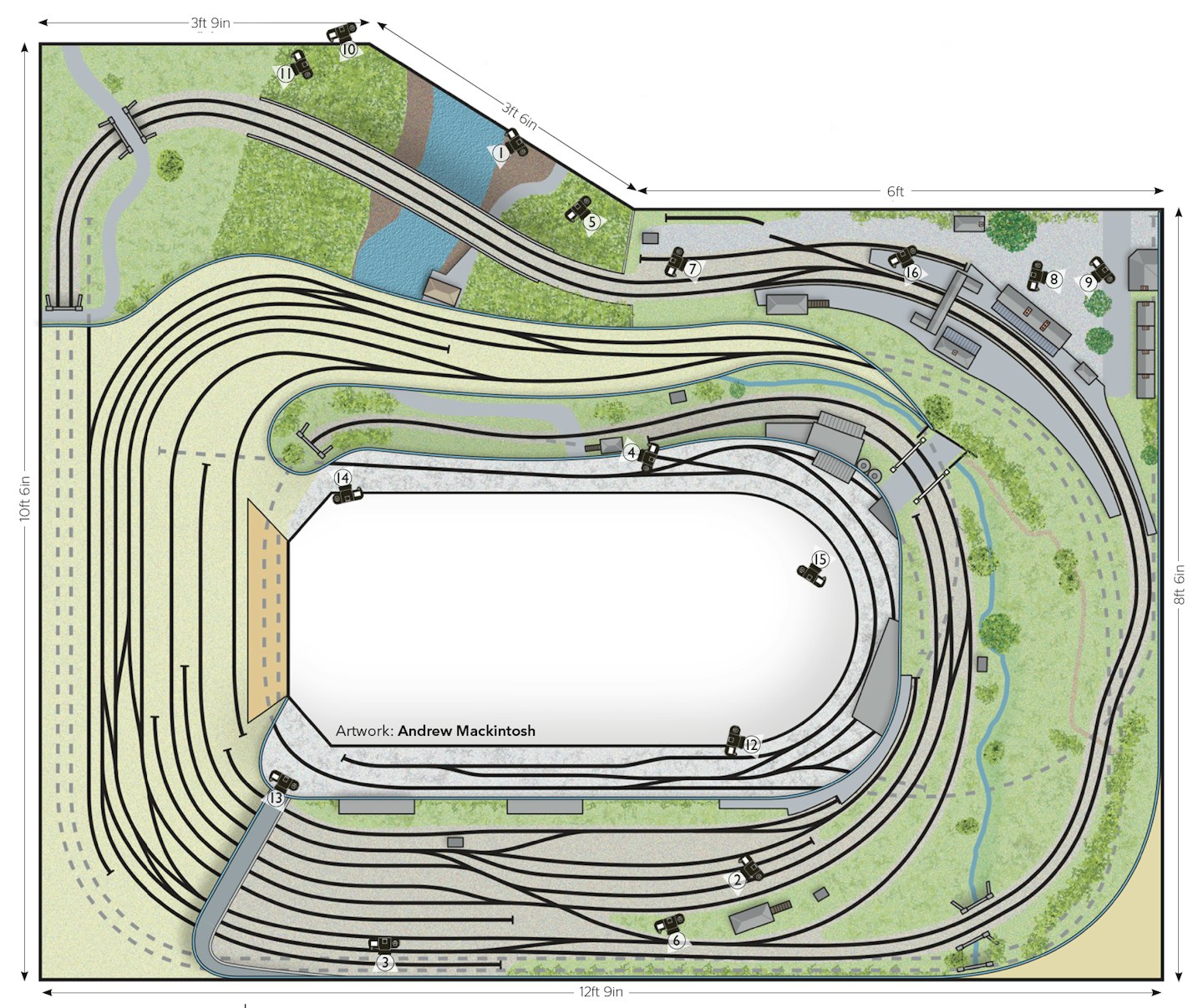
-
Gauge and scale: 4mm:1ft, 16.5mm gauge, ‘OO’
-
Size: 12ft 9in by 10ft 6in
-
Track: Peco Code 100, Code 75 and SMP
-
Power and control: DCC
-
Time to build: 13 years
FACTFILE: ‘MARAZION AND MOUNTS BAY’
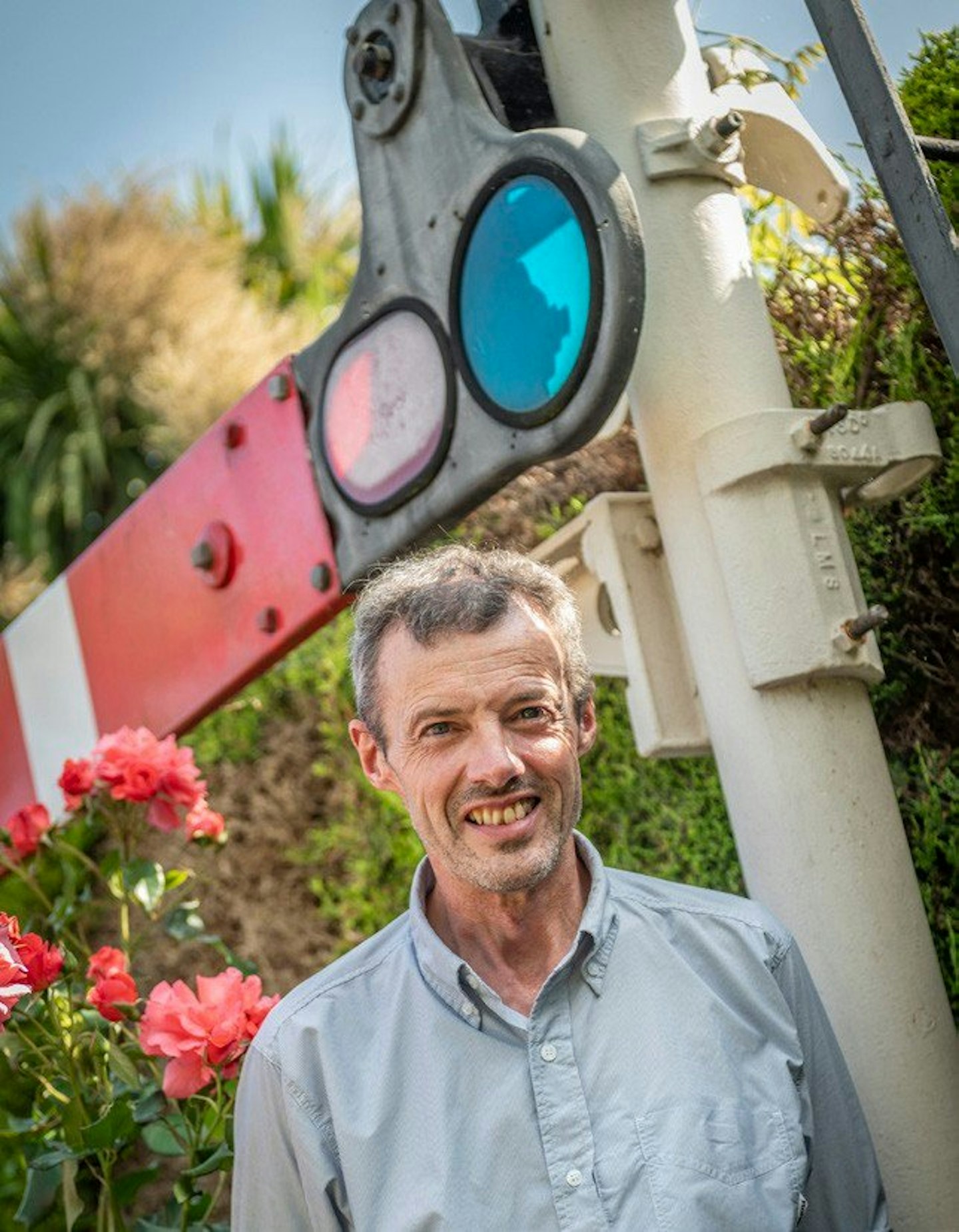
MODELLER CV: PAUL TAYLOR
“I used to work for British Railways and Network Rail, but now I spend my time gardening and sailing. The little blue yacht in the pictures is a balsa model of the Jaguar 22, a boat I used to own a few years ago that had space to sleep aboard.”
In each issue we cover every stage of the hobby, from buying a first model train set right through to museum standard fine-scale modelling. Model Rail magazine is full of helpful tips, advice on model train layouts, details on model train sets, step-by-step articles and more! Choose the right subscription option for you and get instant digital access to the latest issue.

